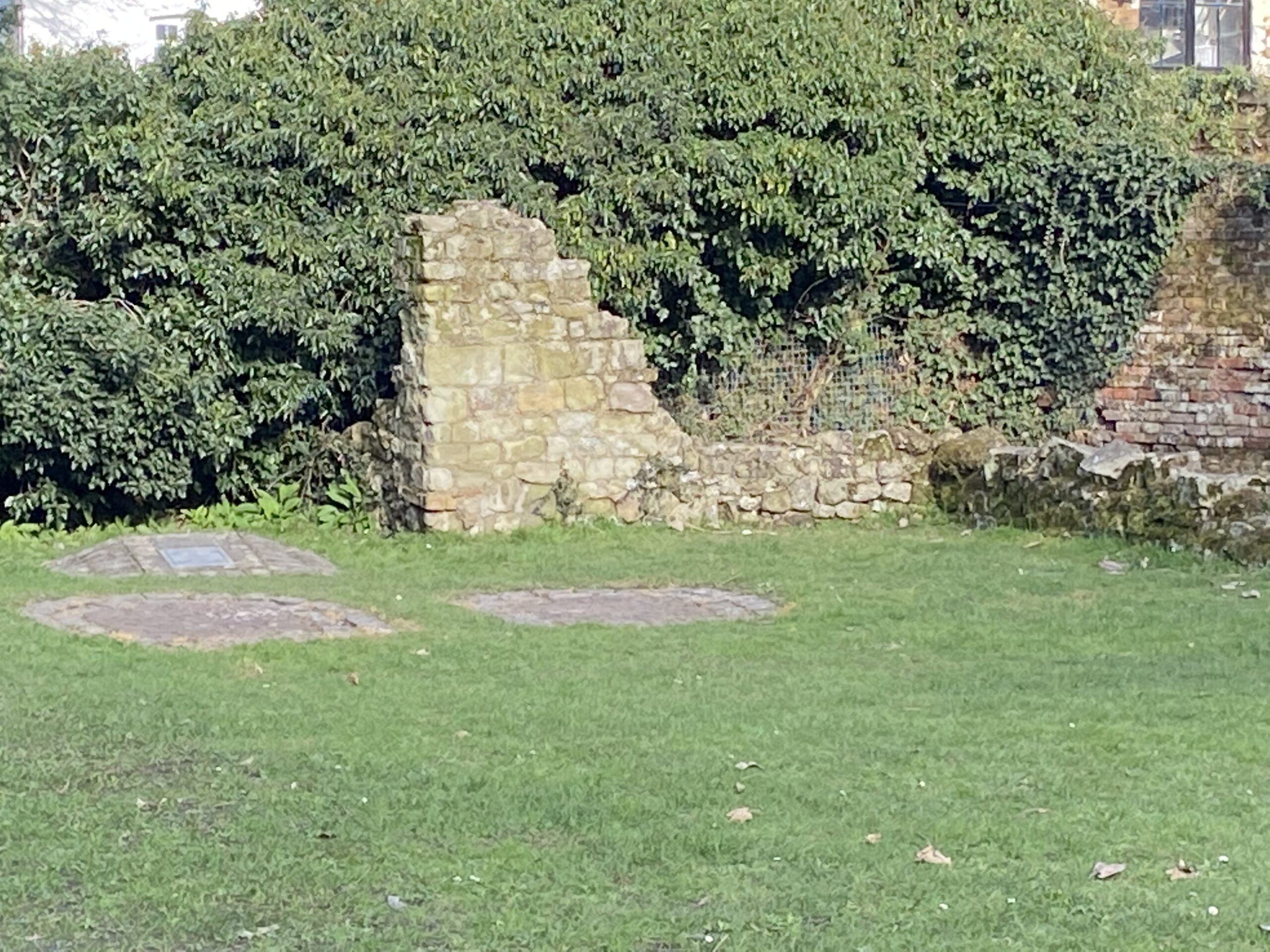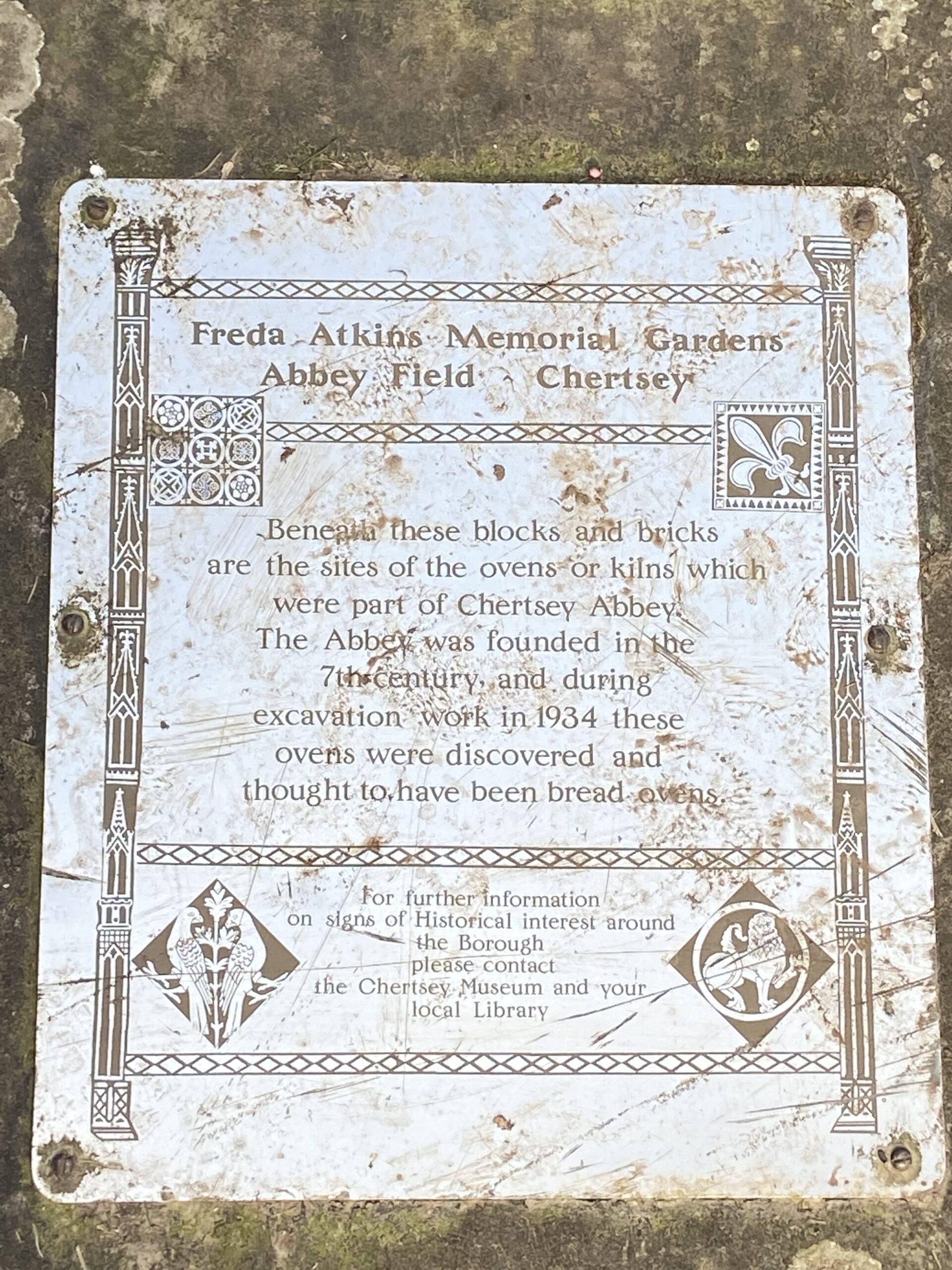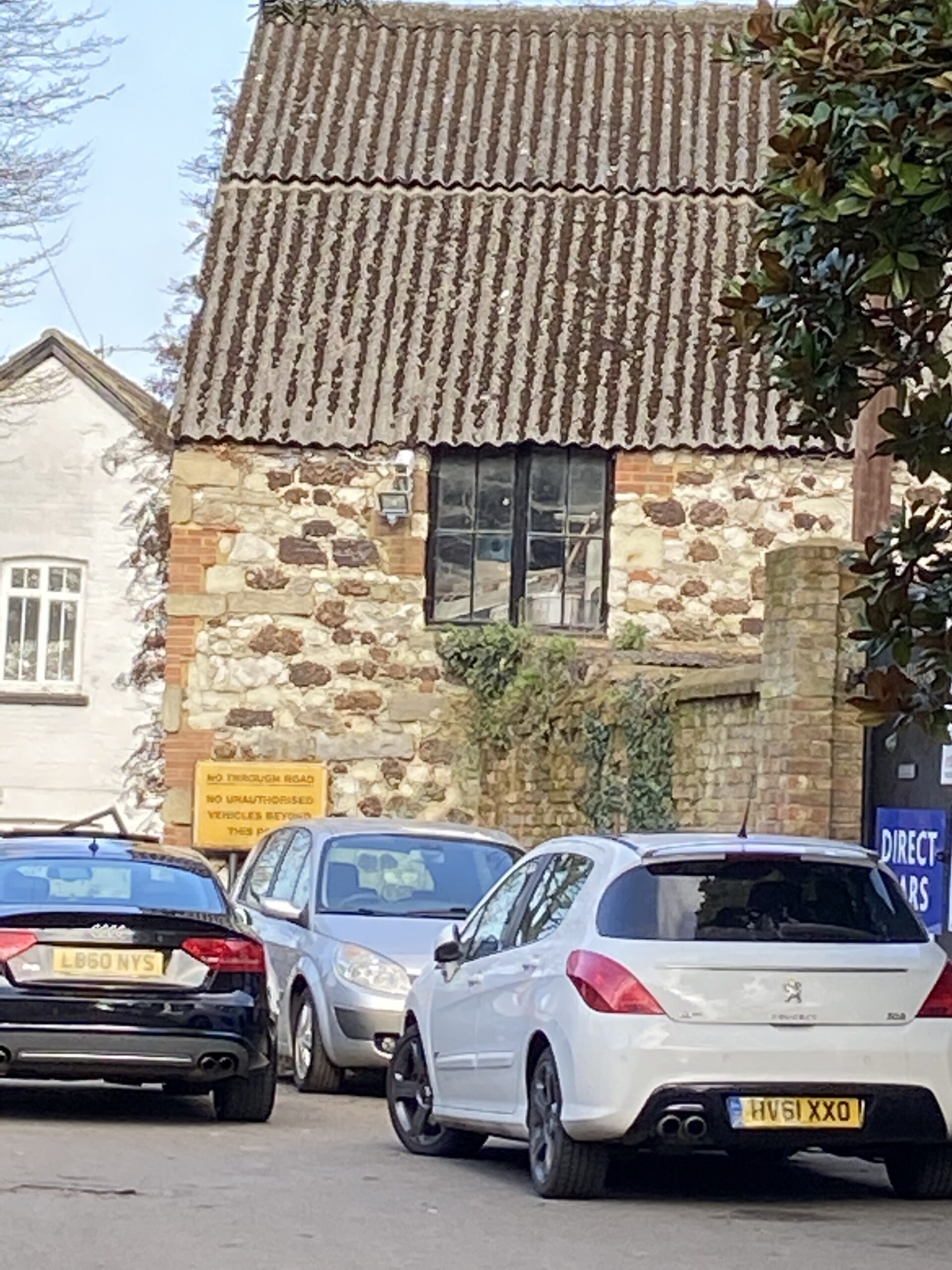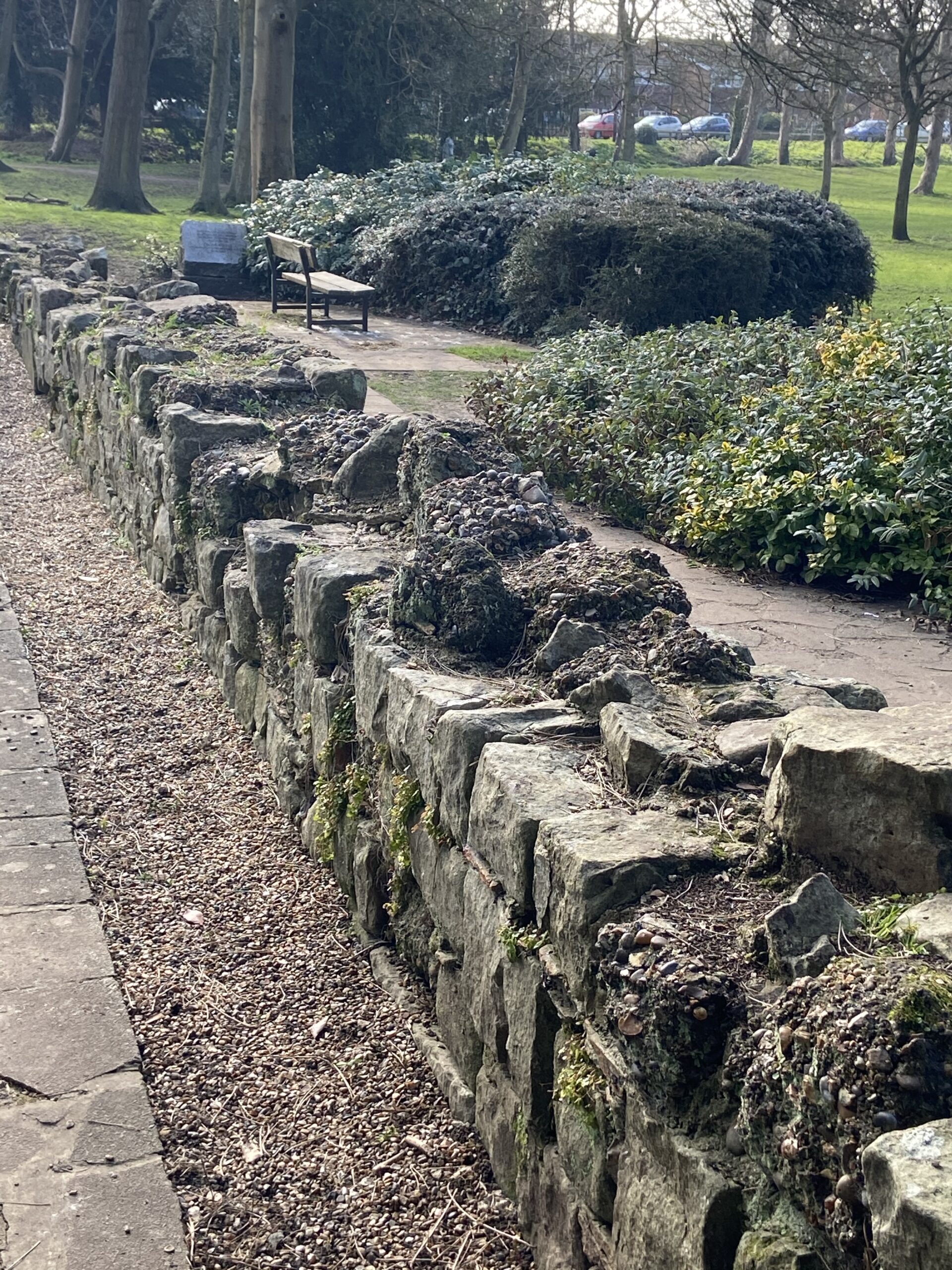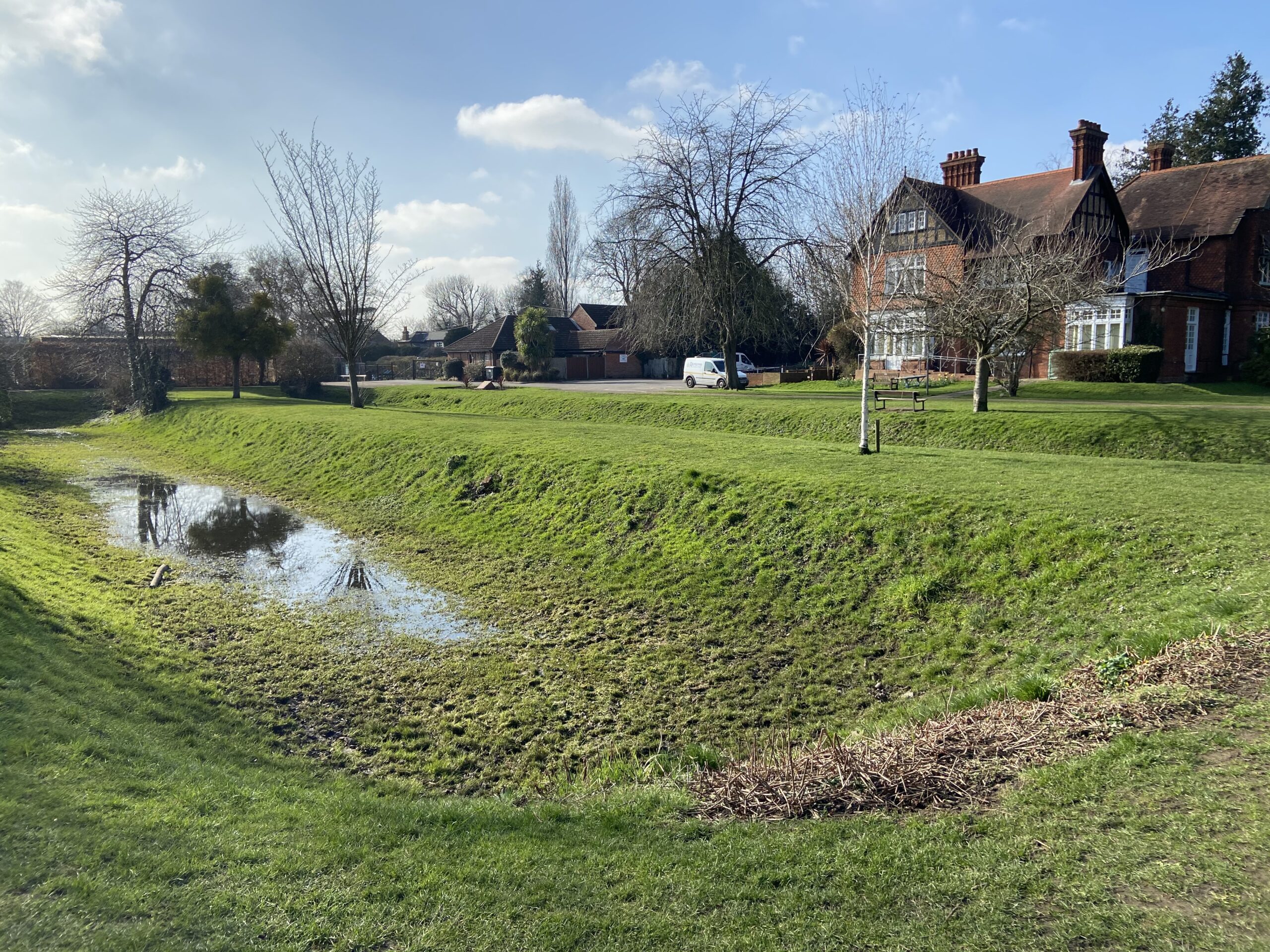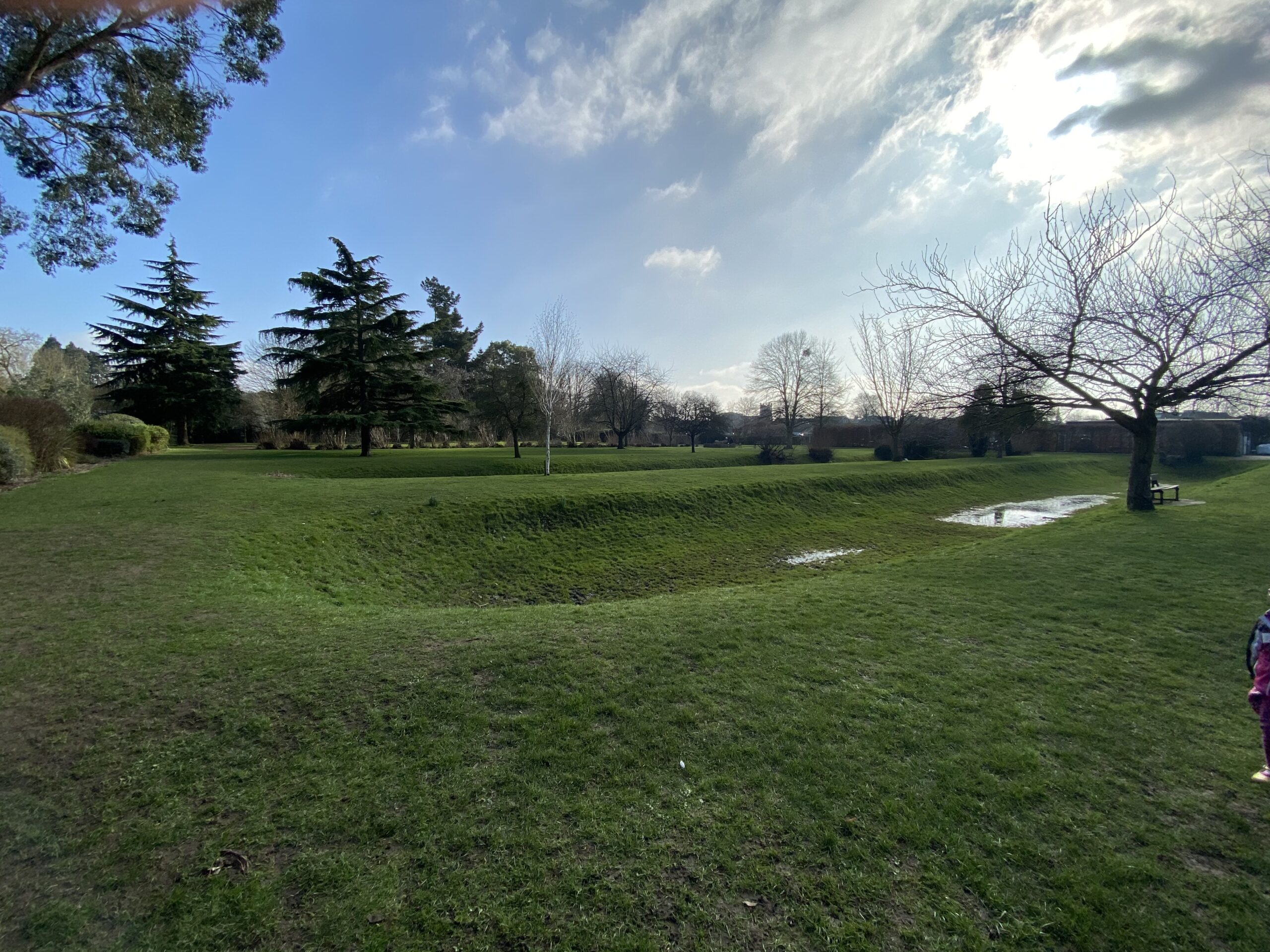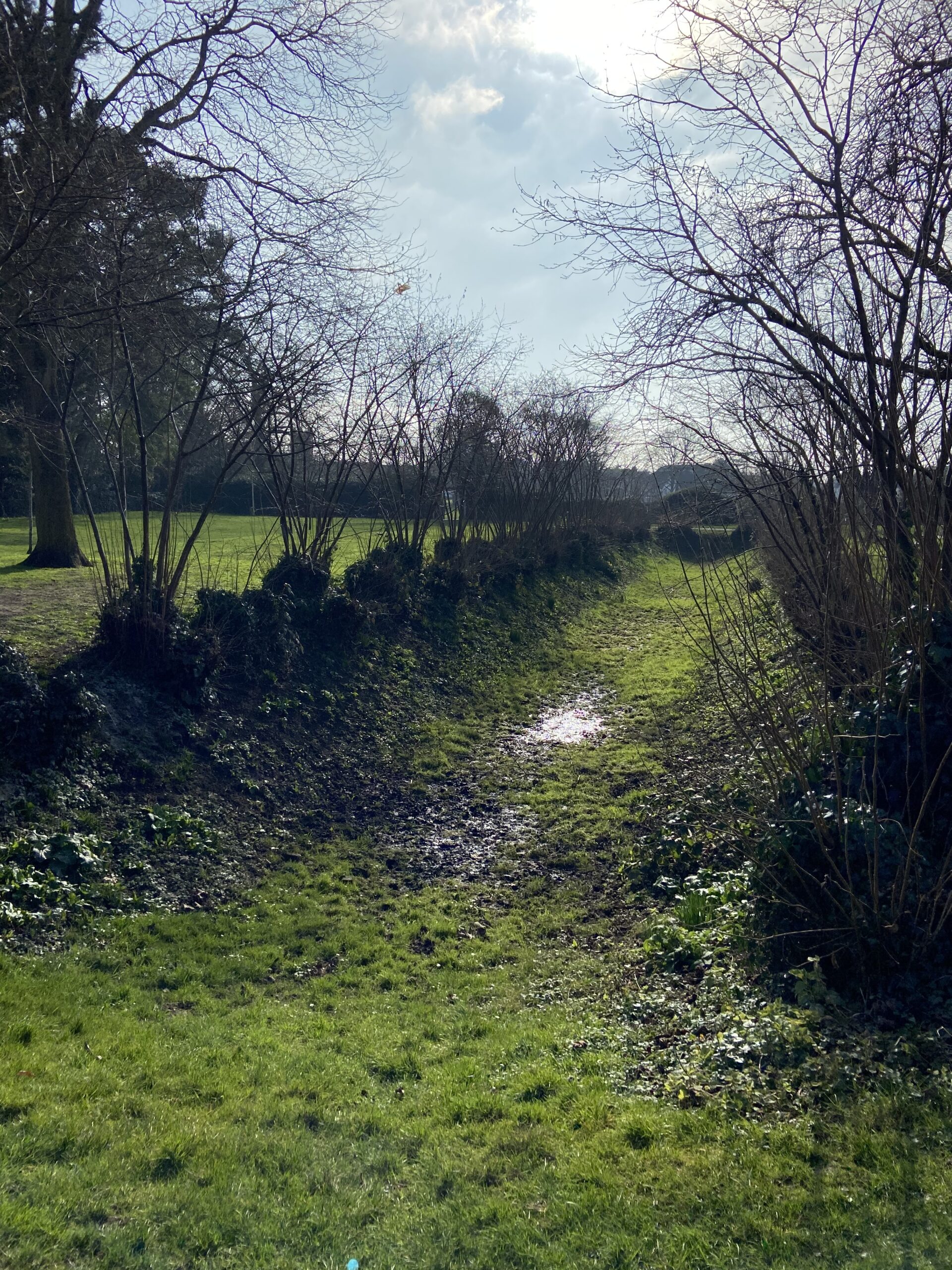Chertsey Abbey, Surrey
Chertsey Abbey, which was founded in the seventh century, was the burial place of Henry VI between 1471 and his re-interment in 1484 in St George’s Chapel, Windsor. The abbey was dissolved in 1537 by Henry VIII.
Very little remains of the abbey complex, although place names throughout Chertsey make it clear that the abbey is very much remembered as central to the town’s identity. The remains of the abbey lie in the Abbey Park, which includes a children’s play area and football pitches. There is on street parking nearby and, also, several car parks in the town centre. To find the remains of the abbey walls, head over to the far end of the park from the town. There, you will find an information board with a plan of the original abbey. There are two surviving pieces of abbey wall, neither more than a couple of feet high, and which run for a few metres. The larger survivor also has some brickwork on the ground in front of it, with a plaque attached, that confirms that what were probably bread ovens were found under the site there. The remaining walls probably therefore relate to a kitchen complex.
Close to this site, and just outside the park gates, you can see a barn that was clearly built with some of the abbey stone – a clue concerning why so little of the abbey remains.
Moving into the park from the surviving walls, you can stroll along the river bank. Then, turn left into the main area of the park. There, you will clearly see two very deep and large fishponds (although without water). They are long rectangles, with rounded corners, and would have provided fish – an important part of the monastic diet. A third fish pond lies parallel a short distance away, this one filled with some scrubby plants. The outline of a fourth, which is not so deep, can also be seen beyond this. The three deep fishponds have clearly been dug out to emphasise what they would once have looked like.
Chertsey also has a free museum, over the road from the abbey park (at the town end). The museum serves the borough of Runnymede, although there is good information about the abbey it neighbours.
